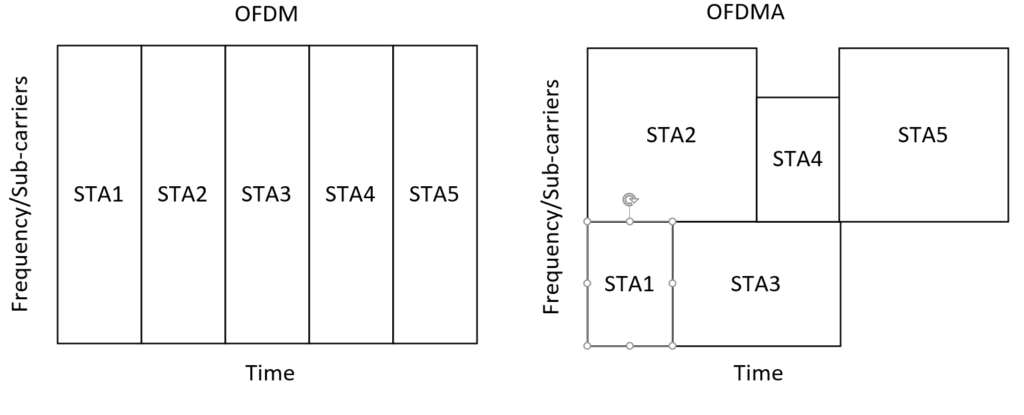802.11ax was ratified by the IEEE in September of 2020 and labeled as Wi-Fi 6 by the Wi-Fi Alliance.
This will cover a couple of my favorite Improvements in 802.11ax:
OFDMA – Orthogonal Frequency Division Multiple Access is new to the 802.11 standards but has been used in cellular networks. OFDMA allows for sub-channelization which divides each channel into multiple resource units that are using to send and receive from multiple stations concurrently. Previously all modulations such as OFDM would use the entire channel to communicate with one station. For instance, with OFDM each user would use the entire frequency for a given time even if not using all of the bandwidth but OFDMA can allocate blocks of the sub-carrier to different stations as shown below.

Multi-user MIMO (MU-MIMO) for Uplink was added in 802.11ax. This allows multiple stations to share the uplink bandwidth divided over the spatial streams and allow the AP will transmit a control frame that contains the scheduling information.
Spatial frequency reuse – also known as BSS coloring. This enables devices to differentiate between their BSS and a neighboring BSS on the same frequency. This was originally defined in 802.11ah but is now further defined in 802.11ax. The coloring is not actually a color but a numerical bit set to identify the same BSS used on the same channel. This allows an overlapping BSS to ignore transmissions sent if the color bit does not match.
Target Wake Time (TWT) – This was first introduced in 802.11ah but will be more widely used now with the ratification of 802.11ax. TWT allows the client to send a request for a wake schedule in order to conserve battery. This is an improvement over the previous method that required set times for all clients but TWT can cater to each client rather than the default for all clients.

